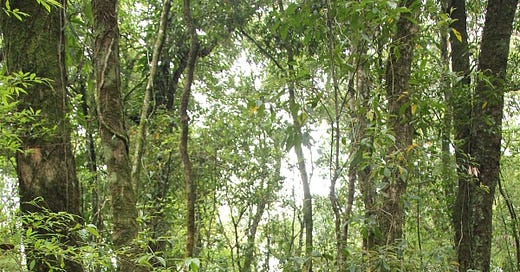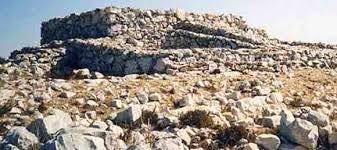Balak (Numbers 22:2-25:9) is such a rich parashah that I had trouble choosing only one theme. Chapters 22-24 are the stories of Balaam, a prophet of YHVH but not an Israelite. Chapter 25 begins the story of Pinchas, Aaron’s grandson.
Balak, the king of the Moabites, greatly fears the numerous Israelites. So he seeks to hire Balaam to curse the Hebrews. Balak is really persistent, making two different offers, taking Balaam to three different places, trying to get him to curse Israel. Instead, as Balaam has repeatedly told Balak, Balaam repeats only what YHVH instructs him to say, since Balaam’s power comes from his connection with YHVH and praises Israel rather than cursing our ancestors. Balaam’s comments about Israel are so praiseworthy that we repeat a snippet of them every morning when we recite the prayer “Mah Tovu” (24:5). “How good are your tents, Jacob, your tabernacles O Israel.”
The story about Balaam’s ass is 23:21 to 23:31. God has commanded Balaam to go with Balak if that’s what Balak’s people want (23:20) and he saddles his ass in the morning to do just that. But an Angel of God stands in the way. The ass can see the angel, but Balaam, the prophet, cannot, so Balaam beats the donkey three times to try to get him to move. Finally, YHVH opens the ass’s mouth and the ass says, why are you beating me, haven’t I been your faithful servant? Have I ever beaten you? Balaam acknowledges that the ass is correct and then YHVH uncovers Balaam’s eyes and he sees the angel.
The story of Pinchas raises the core question of how to navigate our relationships with others. The Israelites have settled in Shittim and, naturally enough, start to integrate themselves with the local population, including intermarrying and offering sacrifices to their gods (lest we think this is only a modern problem). YHVH is in a rage, as he so often is, and a non Levite brought a Moabite woman to the entrance of the tent of meeting, thus violating sacred space because this space was reserved for the Levites. Pinchas, the grandson of Aaron, kills both of the couple by running them through with a spear (yuck). This stops the plague unleased by YHVH in his anger towards the Israelites for chasing after foreign women and foreign Gods.
The full commentary can be read at https://www.earthbasedjudaism.org/numbers-bamidbar/balak-5784?rq=balak. I also talk about the technical aspect of the sacred and hiring technicians, the blessing of the community of Israel and extending that both to include women and the more than human world and give more detail on the start of the Pinchas story.
The high places where Balak takes Balaam to prepare him to curse the Israelites are clearly sacred places of power. Indigenous folk believe that the sacred is more available in certain places than others. These high places were places of sacrifice both for the Moabites in this instance, and also for the Israelites until sacrifices outside of Jerusalem are outlawed because of their association with paganism. It is really important to note that the sacrifices prepared by Balaam are the exact same practice as our ancestors did in the high places.
Balaam takes Balak up to the high places, which Israelites also had before they were destroyed, and they build altars and offer sacrifices of rams and bulls. The word used for “burnt offering” is the same as the word used in Israelite sacrifices/offerings (23:3). Balaam is explicit that he is doing this so that YHVH will communicate with him (23:3-5) and YHVH absolutely communicates with him as expressed in the four prophecies of the parashah (23:7-10), (23:18-24), (24:3-9), and (24:15-24). All this even though the high places used are high places associated with Baal and not YHVH!
Even though these high places are routinely condemned and are associated with paganism, they survive in at least one of our most important prayers. If you know 5 Jewish prayers, chances are that the Kaddish is one of them. This is the prayer we say to commemorate our dead (among other things). The last line of the prayer might be translated as follows (this is the Reform Movement translation) “May the one who creates harmony on high, bring peace to us and to all Israel, to which we say Amen.” But that’s not what the text says. The text actually says, “Make peace from his high places, he who makes peace on us and on all Israel and let us say Amen.” The Reform translation (this is just as true of other translations, I’m not picking on the Reform movement) blithely obliterates the sacred place in which we connect with YHVH, the “high places”
I’ve talked about sacred places before, particularly in the commentary on Vayeitzei. https://www.earthbasedjudaism.org/genesis-bereshit/va-yetze-5783. The high places were important as an institutionalization of particular sacred spots. They were bitterly opposed by the Jerusalem priesthood which wanted to centralize worship at the Temple. They also tended to be associated with the sacred groves of the Goddess on top of hills.
We’ve lost this connection to high places, sacred space and the Goddess. Some of us are working to find our way back to the Goddess, but without any kind of connection to sacred places. Some of us are working towards reconnecting with the sacred in the more than human world in a Jewish way, but without any attention to high places and finding or creating places of power (finding would be better, of course). To me, it is all a piece of our alienation from the earth, and thus from the divine and ourselves.
Do you have any sacred places outdoors? Do you think it is a missing? Is there anything you can do about it?








I want to tell you a little about the landscape around my home here in the UK. Particularly East Sussex where I have spent my entire life. In recent years with the advent of various ancestry sites, I have also managed to uncover an ancestry in this region going back to the fourteenth century, so a real strong connection with East Sussex. The land itself has some remarkable places, and there is one hill that is called Windover Hill, upon which is craved a chalk figure of a man standing between two staves. Known locally as the Long Man of Wilmington, or the Wilmington Giant, there is very little recorded evidence for this figure before the early eighteenth century. That doesn’t mean it wasn’t there, just that perhaps no one took the bother to record it. But whenever I went away either abroad, or visiting other places in The UK, the moment I saw the hill figure from the train, I had a real sense of being home. To the north of the Long Man there is the Ashdown Forest that stretches over a landscape known as The Weald. The forest and the Weald are all that remains of an ancient forest that stretched from Canterbury in the east to Chichester in the west, and it’s name was Andredsweald, which loosely translated as the Forest of Andred. Andred was a pre-Roman Celtic goddess who was represented by the hare, and was worshipped as far north as The Wash, and apparently was venerated by Boudicca. The Romans built a shore fort around 320CE that they called Anderita, also after the name of the local goddess. But even closer to where I now live, there is an old Iron Age fort called Caburn, and I love to walk out over the Downland to visit Caburn, especially on a windy day to blow away the cobwebs, and to stand on the top and look around the panoramic views. To the west is Ditchling Beacon, and just to the south Firle Beacon, both high points that were used in 1588 to light warning beacons from Plymouth in Devon to London warning of the approaching Spanish Armada. So when I look out I am reminding myself of the rich history and that my family has been in this region since before then. Back to Caburn though, and archaeological expeditions uncovered offering pots and the bones of cattle suggesting that it was more of a religious site than a fort. An offering religious site from the time when Andred was worshipped in this landscape, so I like to think that it may have been a sacred site to her as the local goddess. Of course the entire area has been heavily Christianised since the late Saxon period. And Sussex was the last place in Saxon England to succumb to St Augustine. Since the early 1800s, the city of Brighton along the coast had its first synagogue, and then in 1935 it’s first Liberal Shul. In the scheme of things, a Jewish presence has been relatively short, although I understand there were some living in nearby Lewes before the expulsion of 1290. Unless one is aware of the history of the landscape, knowledge of the religious sites, whether ancient pagan or not, can easily be missed.